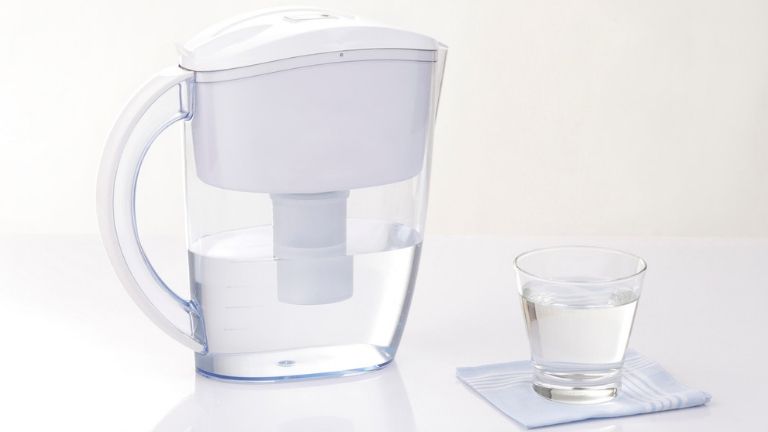Thrush is caused by the overgrowth of a fungus called candida which grows in the vagina and the gut – this is what makes it worse, says nutritionist Lisa Richards, and what helps
If you get regular outbreaks of thrush, you’re probably familiar with symptoms such as itching and soreness around your vaginal opening and the thick, white discharge associated with it.
And you’re also probably familiar with common advice on treating thrush, such as pessaries and capsules.
But a few simple lifestyle shifts could help the cause of thrush, which is an overgrowth of a fungus called Candida albicans (usually shortened to candida) that lives in all of our guts and vaginas. It’s usually harmless, but the right conditions in the gut can cause it to grow out of control.
Indeed, for those that suffer with thrush, the candida fungus has proliferated in their guts and this results in the vaginal symptoms we associate with the common condition.
In fact, candida overgrowth is one of the most common gut imbalances faced by modern society and can lead to a variety of symptoms that are not even thrush-related including fatigue, poor digestion, and food sensitivities.
So what are the main causes of candida? And how can you avoid them?
Cause #1: Excess sugar

We all know that sugar is bad for us – but sometimes we eat it without realizing. The Western diet is particularly high in sugar, and it’s often hidden in our foods.
Candy, pastries, biscuits, cakes, soda, and chocolate are all obvious sources of sugar. But less obvious sources are just as bad – for example breakfast cereal, condiments, and pasta sauce.
It’s this sugar that feeds the candida yeast, allowing it to grow and spread throughout the gut.
Organic, carbon-based compounds such as glucose and sucrose are the best ‘fuel’ for candida albicans. Because the cell walls of a candida organism are 80 percent carbohydrate, these sugars provide the energy it needs to proliferate.
Reducing your risk of candida is as simple as making some changes to your diet and lifestyle
Sugar also helps candida to switch to its pathogenic form so that it can build biofilms that protect it from being killed off by the immune system (see the research on this) and as a result, to multiply.
How to avoid it: Cut your sugar intake. Replace refined carbs with complex carbs – whole wheat, grains, nuts and seeds. Avoid candy and sugary sodas. If you need a sweet fix, eat small amounts of fresh fruit – but try to limit your servings to 2-3 a day. To combat those cravings, opt for high-protein, low-carb foods.
Cause #2: Antibiotics
Yes, they’re sometimes necessary for serious infections – but not for minor colds and flu. Antibiotics kill all bacteria – both friendly and those that makes us sick.
Every time you take antibiotics, you’re killing off loads of the beneficial bacteria in your gut. These are the ones you need to keep in to fight the bad ones you want to keep out (like candida).
An environment with fewer good bacteria provides an opportunity for these pathogenic (or ‘bad’) bacterias such as candida to take hold and spread.
Every time you take antibiotics, you’re killing off loads of the beneficial bacteria in your gut.
Numerous studies have shown that antibiotic overuse results in substantial increases in candida and pathogenic bacterial colonization. This is believed to be a result of beneficial bacteria being destroyed, thus suppressing the immune system.
An imbalance of gut bacteria allows candida to increase its numbers rapidly and become a much more dominant member of the intestines.
How to avoid it: Doctors give out antibiotics all too readily these days – and often for illnesses that can’t be treated with antibiotics, such as viruses.
Avoid this by questioning your doctor on the need for antibiotics. If they are necessary, be sure to follow up your treatment with a course of probiotics. And seek out natural immune boosters like echinacea and regular exercise to prevent illness.
Cause #3: Stress

Chronic stress sends your body into ‘fight or flight’ mode, which is when your adrenal glands start producing more of the stress hormone, cortisol.
To prepare your body to run away from the ‘threat’, cortisol activates your muscles while suppressing your immune system and digestive system.
Stress has been shown to affect the composition of microorganisms in your gut. Clearly, lowering your stress level should be a priority if you want to look after your gut health.
The trouble is, most of us are stressed for long periods of time, which can mean your immune system may be suppressed all hours of the day, every day.
Worse still, cortisol lowers amounts of a protein required for signaling other immune cells. As a result, the number of immune cells in your body are reduced, putting your body at an increased risk of infection and disease. It also means you’re more susceptible to the growth of pathogenic (bad) bacteria and opportunistic yeast such as candida.
How to avoid it: Try to minimize the impact that stress has on you and your life by taking time out each day for yourself.
Meditation, yoga and deep breathing sessions have been shown to dramatically reduce stress by switching off your ‘flight or fight’ mode. Just 15 minutes a day can make a big difference to your stress levels – and your immune system.

Cause #4: Mercury in your fillings
Mercury is a highly toxic substance that was once commonly used in dental fillings. It’s been found that tiny particles of mercury fillings can break free and release a mercury vapor, which we either inhale or swallow.
In the gut, mercury disrupts the healthy balance of bacteria and can also block the activity of lymphocytes and macrophages which are mechanisms essential to our immunity, thus suppressing the body’s defense systems.
This immunosuppressive effect sets the stage for pathogens like the Candida yeast to grow without inhibition. It’s believed that some fungal conditions like Candida may be an adaptation of the immune system to heavy metals such as mercury.
How to avoid it: If you have mercury fillings, it’s entirely possible to get them removed. But because mercury is so toxic, removal must be done by a dentist who can do it safely.
Cause #5: Chemical exposure
We are bombarded with chemicals every day – they’re in our drinking water, air, food and skin products. Chlorine and fluoride in particular are toxic to our immune system, especially the good bacteria in our gut.
These and other common chemicals weaken our immune cells, reducing their ability to fight off pathogens and yeasts such as Candida.
The liver also suffers under the added burden of trying to filter out these chemicals. This may result in even more toxins and chemicals building up in the gut and bloodstream, creating a thoroughly unhealthy environment in all body systems.
This is bad for the beneficial bacteria in your microbiome, but great for pathogens like candida.

How to avoid it: Installing a water purification system in your home is the first step in avoiding chlorine and fluoride in the water. Otherwise, use water filters like Brita to clean those unwanted chemicals out of your water.
It’s also a good idea to check the product labels of foods and skincare for their chemical content, and avoid the ones with any ingredients you don’t recognize. Eat organic and use only natural products on your skin and hair in order to reduce the toxic load on your body.

Through her website, thecandidadiet.com, she explains the benefits of a low-sugar, anti-inflammatory diet.
More Healthista Content:
Got a pimple down there? When to worry and what to do
Ditch the Prosecco and eat more cauliflower – 11 smile secrets top dentists want you to know
12 adult acne questions answered by this doctor who had it herself
5 natural fixes for joint pain proven by science
Bloated? Constipated? 7 signs you’re stuck in a fibre gap
This woman had an EYELASH transplant
Like this article? Sign up to our newsletter to get more articles like this delivered straight to your inbox.





















































